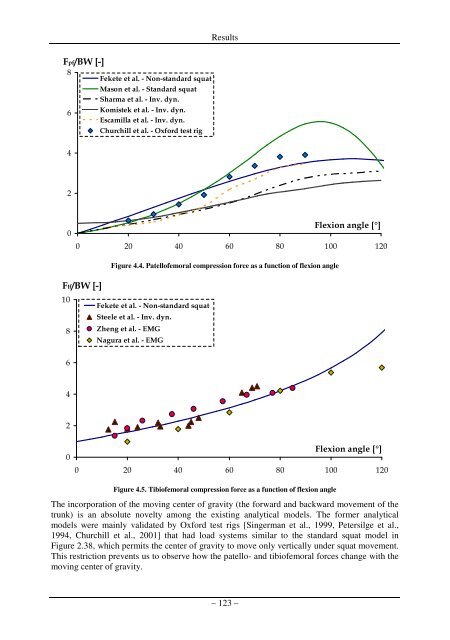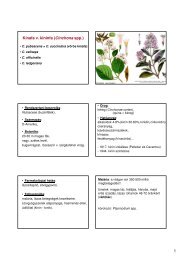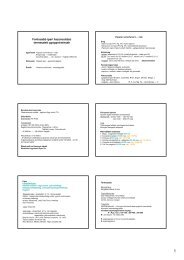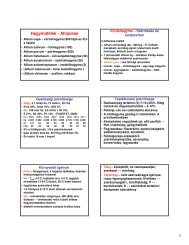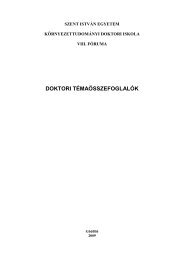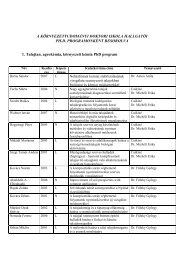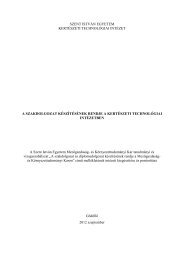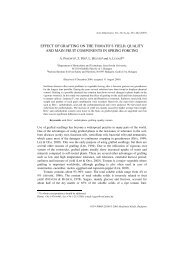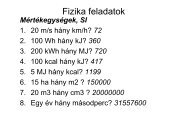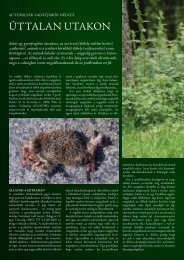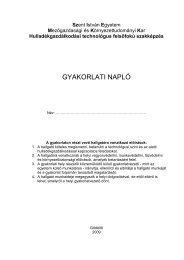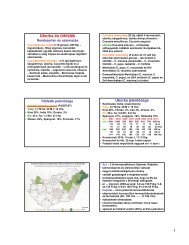PhD Fekete - SZIE version - 2.2 - Szent István Egyetem
PhD Fekete - SZIE version - 2.2 - Szent István Egyetem
PhD Fekete - SZIE version - 2.2 - Szent István Egyetem
You also want an ePaper? Increase the reach of your titles
YUMPU automatically turns print PDFs into web optimized ePapers that Google loves.
Results<br />
Fpf/BW [-]<br />
8<br />
<strong>Fekete</strong> et al. - Non-standard squat<br />
6<br />
Mason et al. - Standard squat<br />
Sharma et al. - Inv. dyn.<br />
Komistek et al. - Inv. dyn.<br />
Escamilla et al. - Inv. dyn.<br />
Churchill et al. - Oxford test rig<br />
4<br />
2<br />
0<br />
Flexion angle [°]<br />
0 20 40 60 80 100 120<br />
Ftf/BW [-]<br />
Figure 4.4. Patellofemoral compression force as a function of flexion angle<br />
10<br />
<strong>Fekete</strong> et al. - Non-standard squat<br />
Steele et al. - Inv. dyn.<br />
8 Zheng et al. - EMG<br />
Nagura et al. - EMG<br />
6<br />
4<br />
2<br />
0<br />
Flexion angle [°]<br />
0 20 40 60 80 100 120<br />
Figure 4.5. Tibiofemoral compression force as a function of flexion angle<br />
The incorporation of the moving center of gravity (the forward and backward movement of the<br />
trunk) is an absolute novelty among the existing analytical models. The former analytical<br />
models were mainly validated by Oxford test rigs [Singerman et al., 1999, Petersilge et al.,<br />
1994, Churchill et al., 2001] that had load systems similar to the standard squat model in<br />
Figure 2.38, which permits the center of gravity to move only vertically under squat movement.<br />
This restriction prevents us to observe how the patello- and tibiofemoral forces change with the<br />
moving center of gravity.<br />
– 123 –


